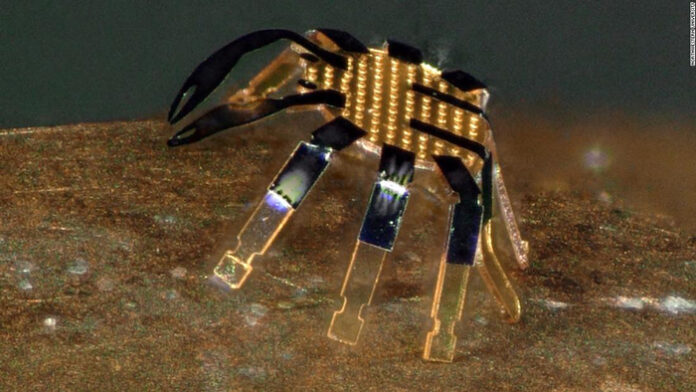At Northwestern University in Illinois, scientists have demonstrated the smallest remote-controlled robot, which is just 0.5 mm in all axes. With its tiny dimensions, it can walk, jump, turn and bend – without the use of hydraulics or electricity.
The mechanism is based on an alloy with a shape memory effect. When creating a structure, it is deformed using a thin glass coating. When heated, the alloy returns to its original shape, and when cooled, the glass coating re-deforms. Heating is carried out using a laser, and due to the miniature size of the mechanism, heat dissipates very quickly: up to 10 cycles in 1 second.
The direction of the laser beam determines the direction in which the robot moves, and its average speed is about half the length of the body per second. The project’s authors experimented with several forms of the mechanism, including a tripod that can walk on water, spiral structures of the limbs, thanks to which the robots can jump, and some other options that enable other movements.
The head of the research group, Professor John A. Rogers, said that in practice, such robots can be used both in industry, in the repair and assembly of complex structures, and in medicine – to stop bleeding and remove tumors. However, in some cases, it will be necessary to solve the problem of where and how to position the laser.







